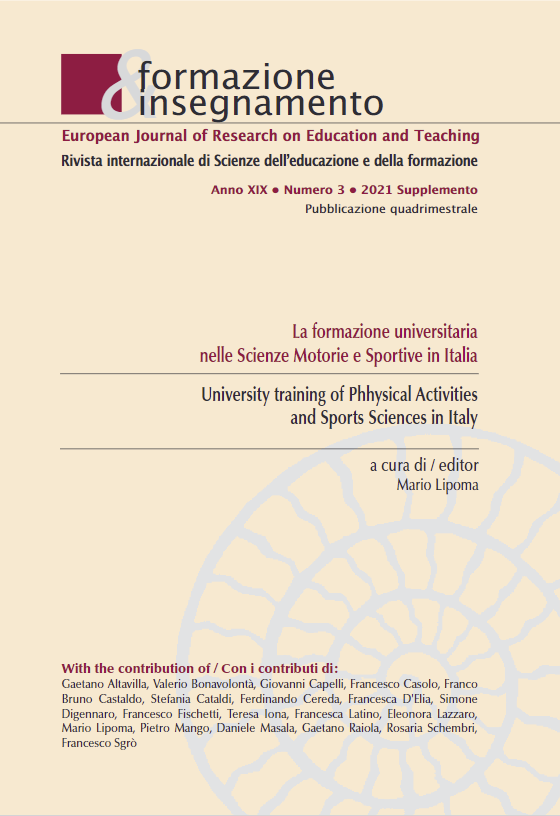Physical education and school bullying: state of the art, practical implications and research proposals
DOI:
https://doi.org/10.7346/-feis-XIX-03-21_04Abstract
Bullying has been considered as a multidimensional form of aggression which includes a double distinction, distinguishing the form of aggression and its functions. In the school context, bullying is considered a primary issue with figures up to 35%. Two forms of aggression have traditionally been considered: physical aggression and relational/social aggression. In Italy regional laws have been enacted on prevention and fight against bullying and cyberbullying and the parliament started the legislative iter to recognize bullying as a form of stalking. Physical education (PE) potentially promote behaviors and attitude against bullying but PE setting has also been linked to bullying episodes: victims of bullying can tend to avoid PE lessons as a potential situation that make them feel vulnerable; on the other hand, PE can exert beneficial effects in encouraging the externalization of emotions and improving social skills. PE teaching styles and teachers’ proactive attitude are crucial to promote a friendly environment and to avoid potential situation of discrimination. PE teachers should try to enhance self-efficacy as well as social competences of their students and avoiding creating embarrassing sit-uation due to physical appearance and/or poor motor skills. Future research should address behaviors of PE teachers to contrast bullying, evaluate the positive/negative role of PE in bullying situations, explore the prevalence of bullying at school respect to the other disciplines.
Downloads
Published
How to Cite
Issue
Section
License
Copyright (c) 2022 Pensa MultiMedia

This work is licensed under a Creative Commons Attribution 4.0 International License.
Formazione & insegnamento is distributed under Attribution 4.0 International (CC BY 4.0).
For further details, please refer to our Repository & Archiving Policy, as well as our Copyright & Licensing Terms.





